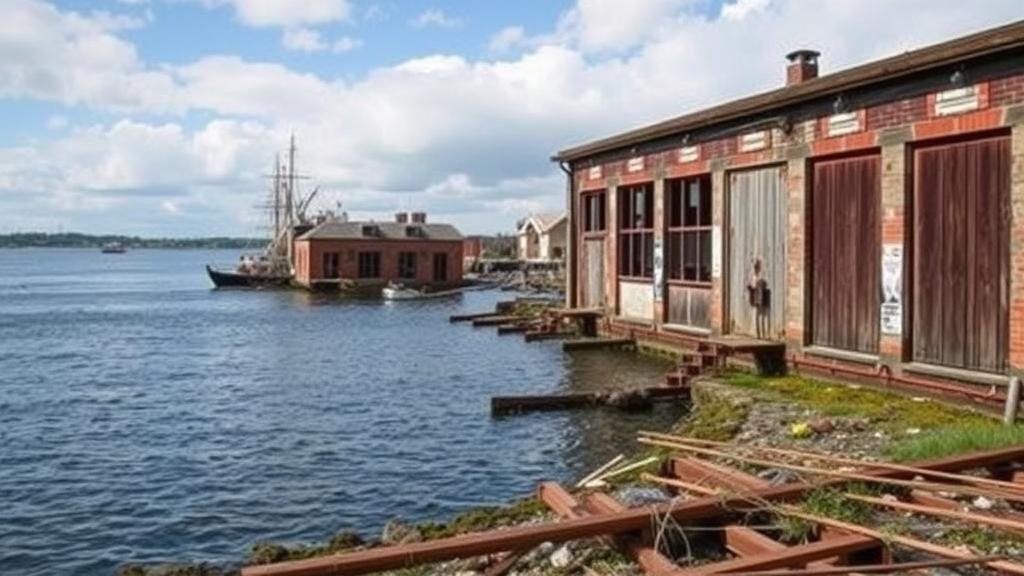Tracing Abandoned Harbor Warehouses for Maritime Trade Relics
Tracing Abandoned Harbor Warehouses for Maritime Trade Relics
Maritime trade has been a pivotal element in global economic development, with harbor warehouses acting as critical nodes in this intricate network. This research article explores the historical significance of abandoned harbor warehouses, tracing their evolution from bustling centers of commerce to neglected structures, and examines their potential as maritime trade relics. Various case studies illustrate the sociocultural and economic impacts of these warehouses, particularly in regions historically reliant on maritime trade.
Historical Context of Harbor Warehouses
Harbor warehouses have existed since antiquity, providing necessary infrastructure for the storage and distribution of goods. According to Smith and Richmond (2019), during the 19th century, the expansion of maritime trade routes led to a proliferation of warehouses, particularly in port cities like Liverpool, London, and New York City. For example, the Albert Dock in Liverpool, opened in 1846, became one of the first warehouses in the United Kingdom to be constructed from cast iron, brick, and stone, allowing for greater durability and the optimized storage of perishable goods.
Factors Leading to Abandonment
Numerous factors can lead to the abandonment of harbor warehouses, including shifts in trade routes, technological advancements, and urban redevelopment pressures.
- Shifts in Trade Routes: The opening of the Panama Canal in 1914, for instance, redirected shipping lanes and diminished the needs for certain warehouses on the East Coast of the United States.
- Technological Advancements: The rise of containerization in the mid-20th century, which allowed for a more efficient shipping process, resulted in the obsolescence of many older storage facilities.
- Urban Redevelopment: Cities often prioritize newer developments over preservation, leading to the demolition or neglect of existing harbor warehouses to make way for commercial or residential projects.
Case Studies of Abandoned Warehouses
This section focuses on three significant examples of abandoned harbor warehouses which illustrate the broader trends and impacts discussed earlier.
1. The Packard Plant, Detroit, Michigan
The Packard Plant, once a vibrant automobile manufacturing facility, became emblematic of industrial decline in the U.S. after its closure in 1956. Located near the Detroit River, the plant’s sprawling warehouses now serve as a case study in urban decay and the possible resurgence of interest in industrial heritage tourism. Researchers estimate that revitalizing such structures could increase tourism rates by up to 20% in economically distressed areas (Urban Land Institute, 2022).
2. Grain Elevator District, Buffalo, New York
Buffalos Grain Elevator District is another poignant example of abandonment in maritime infrastructure. Once integral to the distribution of grain across the Great Lakes, many of these structures have fallen into disrepair. Local initiatives aimed at repurposing these warehouses are currently being explored, with plans to convert them into mixed-use developments that preserve their historical character while invigorating the local economy.
3. Dockyards of Kingston, Jamaica
Kingstons historical dockyards were central to trade in the Caribbean during the 17th and 18th centuries. Currently, many of these warehouses lay abandoned. Efforts by the Jamaican government to restore these sites into cultural heritage centers showcase how preserving maritime trade relics can foster national identity and promote educational tourism.
Significance of Preserving Abandoned Warehouses
Preserving abandoned harbor warehouses has multifaceted benefits that extend beyond simple restoration. Real-world applications demonstrate that these sites can foster tourism, provide economic opportunities, and enrich local culture. For example, the Industrial Heritage Trail in Pennsylvania, which features several restored warehouses, has reported an increase in local business revenue of approximately 15% since its establishment in 2010.
Conclusion
Tracing abandoned harbor warehouses provides insight into the evolution of maritime trade and its various impacts on urban development and economic patterns. The documented case studies highlight potential pathways for revitalizing these relics, emphasizing the importance of balancing preservation with contemporary needs. Ultimately, fostering an appreciation for these structures can lead to enhanced community engagement, economic rejuvenation, and sustainable tourism. Future research should continue to explore innovative approaches for integrating abandoned maritime trade infrastructure into modern urban landscapes.
Actionable Takeaways:
- Encourage local governments and stakeholders to assess the potential of abandoned warehouses for community use.
- Promote educational programs that inform the public about maritime history and the significance of these sites.
- Support heritage tourism initiatives that showcase restored warehouse sites to boost local economies.
References:
- Smith, A., & Richmond, P. (2019). The Evolution of Warehousing in Maritime Trade. Maritime History Journal.
- Urban Land Institute. (2022). Revitalizing Abandoned Industrial Sites: A Path to Economic Recovery.



